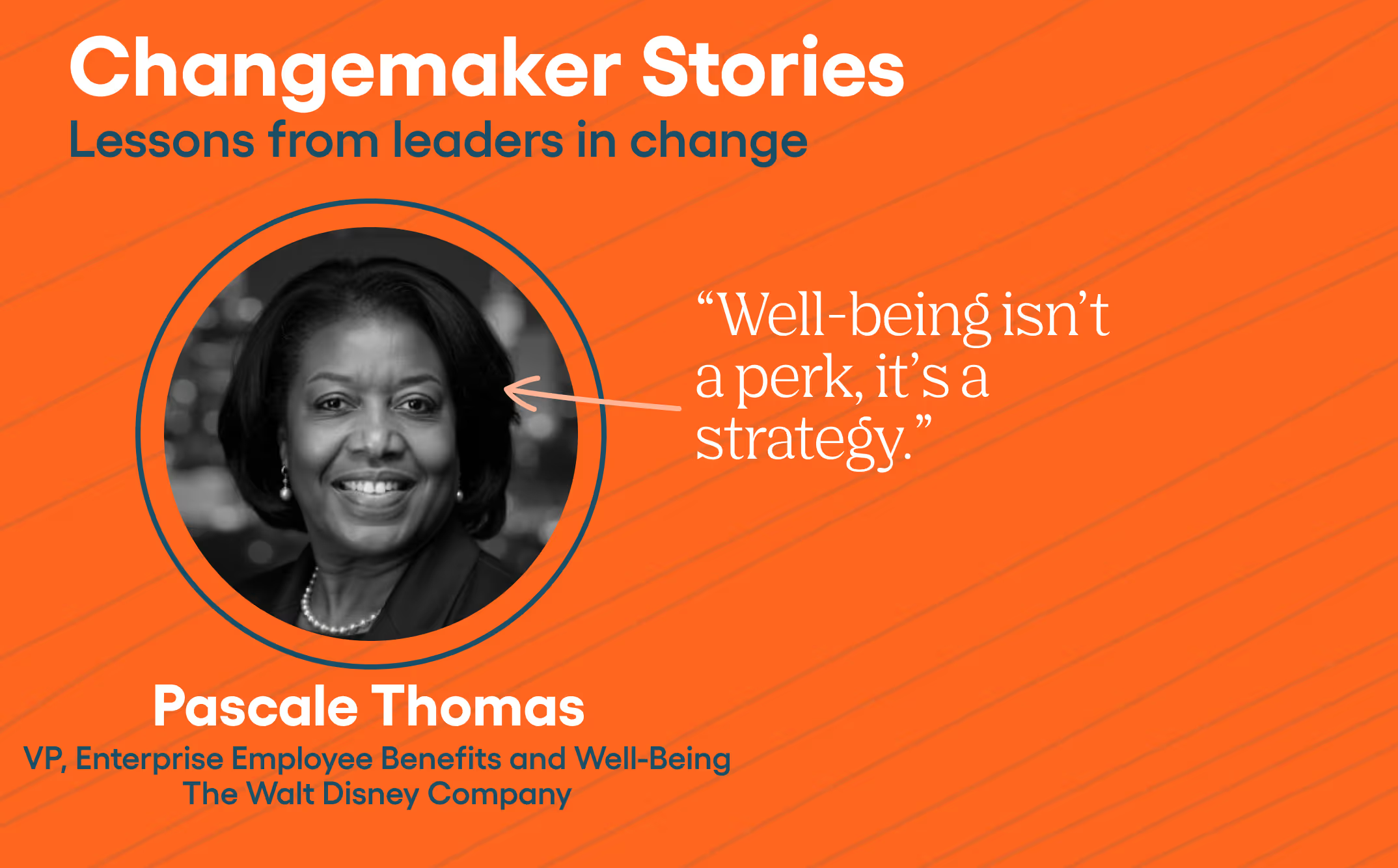

Welcome to Changemaker Stories from LOCAL – an ongoing series of personal interviews with leaders driving change across every industry and discipline. Because change shouldn’t mean going it alone.
This week, we sat down with Pascale Thomas, Vice President of Enterprise Employee Benefits and Well-being at The Walt Disney Company. With a career that spans actuarial science, consulting, and HR transformation, Pascale brings a multidimensional view to culture, care, and change. Her thoughtful, people-first approach has helped organizations navigate everything from mergers to mental health—always with clarity, compassion, and intentionality.
“The wound is where the light enters,” I love that quote from Rumi. It reminds me that change, when done right, isn’t just painful – it’s powerful. The hard parts are often where the transformation really begins. My own journey into change work wasn’t linear. I started in actuarial science, moved into consulting, then into internal HR roles—and somewhere along the way, I realized I wanted to do more than manage benefits. I wanted to reshape the systems that impact how people live and work. And I wanted to make it easier for people to thrive in a world that often makes that hard.
Well-being isn’t a perk. It’s a strategy. At Disney, our employee well-being strategy is grounded in four dimensions: physical, financial, emotional, and social. We’ve worked hard to define what’s truly within our control as an employer and focused our programs on making a real, measurable impact in those areas. From removing barriers to affordable healthcare to supporting financial resilience to launching global mental health activations that reduce stigma—we treat well-being not as a siloed initiative, but as a cultural imperative. These are not just benefits—they’re business levers.
If you don’t build trust, change doesn’t stick. I’ve held roles at multiple companies where I was responsible for leading change during mergers, acquisitions, restructures—you name it. And the biggest lesson I’ve learned is this: people need to feel like they were considered in the process. Whether you’re overhauling a 401(k) plan or integrating five different workforces, thoughtful design and transparent storytelling make all the difference. Our messaging isn’t just about features or policies—it’s about showing people they matter. I once worked on a merger where we redesigned the whole retirement plan—not to check a compliance box, but to rebuild trust for employees who had lost everything in a previous system. That kind of nuance makes or breaks your transformation.
Storytelling isn’t fluff. It’s a function. We’re a company built on storytelling, so we bring that same spirit to how we communicate internally. Our internal branding reflects that: clear language, relatable themes, and a consistent voice that helps employees see themselves in the message. One of our internal branding principles is, “You are the architect of your story. We’re here to help you build it.” It’s not just pretty copy—it’s how we deliver trust and clarity across the organization. We measure what we say and how it lands—participation, sentiment, NPS scores—because language shapes experience.
“There is no substitute for seeing your program go viral.” We knew our approach was working when employees began uploading their own videos and photos celebrating ‘recharge days’—a simple initiative to encourage mental rest. These weren’t corporate videos. They were joyful, self-made clips of people putting their phones in safes, spending time with their families, and reclaiming their energy. That kind of feedback doesn’t show up in spreadsheets, but it tells you everything you need to know. It means people aren’t just absorbing your message—they’re living it.
Culture care is business care. Change only works when it takes culture seriously. That’s why we communicate in multiple languages and formats. Why we listen to feedback and track impact with rigor. Why we’re not afraid to be human in how we lead. Because when people feel seen, supported, and trusted, that’s when they thrive—and that’s when businesses thrive, too. Culture isn’t a backdrop—it’s the stage. And how we show up determines what’s possible.
Even in a world of AI, people still want to feel human. As we add more technology to the workplace, we can’t afford to lose the human thread. I’m seeing a trend, especially among digital natives, where the need for connection and guidance is stronger than ever. Whether it’s through real advocates, smart navigation, or empathetic design, the organizations that will win are the ones that make people feel heard—even when the answers come from a chatbot. We can use tech to solve for complexity, but it’s still on us to deliver care.
Transformation requires a wide-angle lens. At a prior company, I had to reconcile five wildly different 401(k) plans into one cohesive model. The financial calculus was complex, but the emotional calculus was even more important. We designed the plan with storytelling, empathy, and clarity. We hosted 1:1 conversations. We built trust not just with logic, but with heart. Change management isn’t just about process—it’s about people. And when you take the time to meet people where they are, the outcomes speak for themselves.